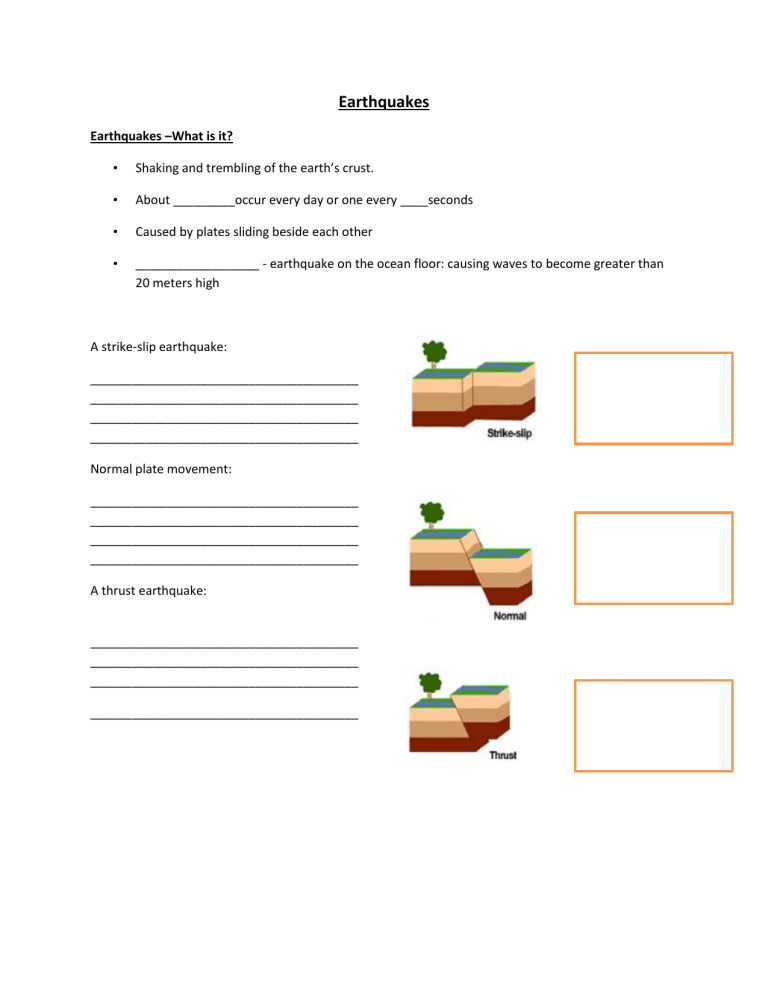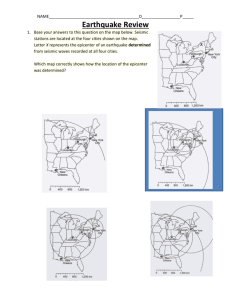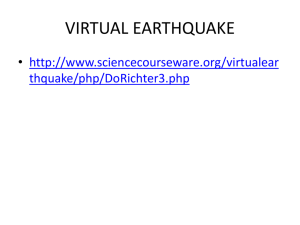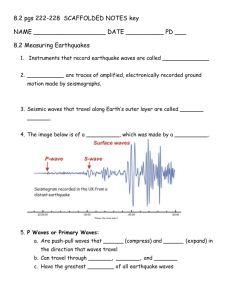Earthquakes

Earthquakes
Earthquakes –What is it?
• Shaking and trembling of the earth’s crust.
• About _________occur every day or one every ____seconds
• Caused by plates sliding beside each other
• __________________ - earthquake on the ocean floor: causing waves to become greater than
20 meters high
A strike-slip earthquake:
_______________________________________
_______________________________________
_______________________________________
_______________________________________
Normal plate movement:
_______________________________________
_______________________________________
_______________________________________
_______________________________________
A thrust earthquake:
_______________________________________
_______________________________________
_______________________________________
_______________________________________
Seismic Waves:
The three main types of seismic waves are:
________________________________
_________________________________
_________________________________
P Waves:
• Primary waves
• Arrive first at the epicenter
S Waves:
• Secondary waves
• Move in up-down motion
L Waves:
• Slowest moving seismic waves
• Travel on top of Earth’s surface
Measuring Earthquakes:
• _________________________-measures and detects seismic waves
• _________________________- a scale that allows scientists to determine earthquake strength based on many readings
• 1-10 levels at which an earthquake is measured Above a 6 is very destructive
• _______________ - aboveground of origin; most violent shaking occurs at the epicenter
What influences the amount of damage an earthquake causes?
magnitude of the earthquake (how strong and fast the seismic waves are)
distance of location from ____________________________________________________
type of movement of the plates or along fault
_________________________________________ (loose, solid, flexible, stiff)
construction type and _______________________________











